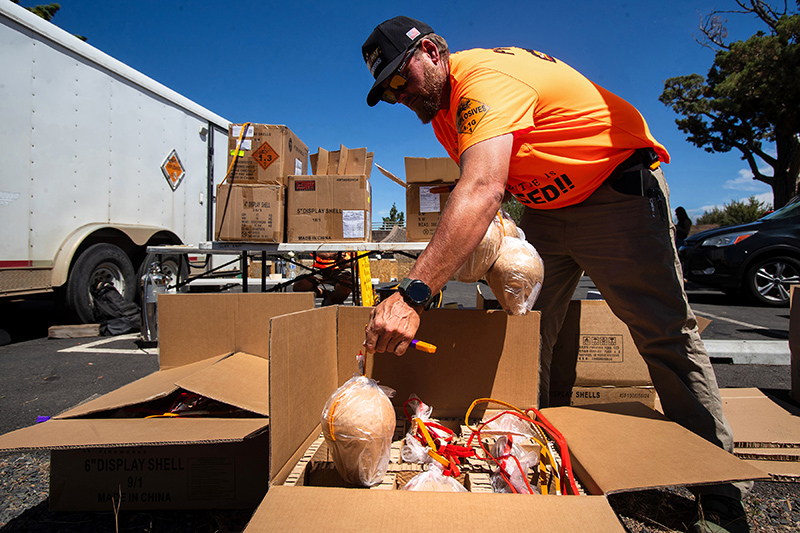Revisiting files from death of Yankee great
Published 12:00 am Sunday, August 5, 2018
The anguish still rises unmistakably from the pages of the deposition, which is now nearly 40 years old. In it, a witness named David Hall hesitates as he testifies, and a lawyer asks if he needs a short break. Hall declines and continues.
By the time he is done, he has provided a devastating account of the final moments in the life of Thurman Munson, the New York Yankees catcher who died at age 32 when the plane he was flying crashed short of the runway at Akron-Canton Airport in Ohio on Aug. 2, 1979.
Hall was in the plane when it slammed into the ground. In the deposition, he describes how in the immediate aftermath of the crash, Munson lay motionless, his head turned sideways and pressed against the instrument panel.
Munson’s neck, it turned out, had been broken by the impact of the crash. His body was paralyzed. Still, Hall testified, Munson managed to ask him and Jerry Anderson, the other passenger in the plane, if they were OK.
And then, Hall testified, flames began to lick at the fuselage of the Cessna Citation turbojet, and Munson gasped, “Fire extinguisher.” What followed, Hall said, were the final words uttered by Munson, the hard-nosed All-Star and team captain.
“Help me, Dave,” he said.
Hall and Anderson tried. They strained to lift Munson’s immobilized body from his seat, to free him from the wreckage, but they couldn’t. And as smoke and flames engulfed the cockpit, Hall, a flight instructor who had previously taught Munson to fly propeller planes, and Anderson, a friend and business associate of Munson’s, had no choice but to make their escape.
Much has been written over the years about Munson’s shocking death on that August day, but until now the depositions that were given in two lawsuits that were filed after the crash had remained stored away, out of the public realm. One of the suits, filed by the Yankees, was dismissed before it ever went to trial. The other, filed by Munson’s widow, Diana, did go to trial, but the case was quickly settled after some initial testimony.
The depositions provide a kind of oral history of Munson’s life and death. They were uncovered this summer as a result of efforts made by Allan Blutstein, a lawyer who grew up on Long Island as a devoted Munson fan and has made a professional career of Freedom of Information actions, including recent, and controversial, filings involving employees at the Environmental Protection Agency.
Blutstein did not need to make a Freedom of Information filing to obtain the Munson depositions. He simply had to be diligent and spend some money. After acquiring the documents, he made them available to The New York Times.
The depositions, which include testimony from such notable Yankees as Reggie Jackson, Billy Martin and Graig Nettles, do not challenge the basic narrative of Munson’s death — that he was a standout athlete who began flying less than two years earlier, in part so he could get home to Ohio to see his family on days off, and that he died while practicing takeoffs and landings at the airport.
But what the depositions do provide is a revealing snapshot of Munson, who was sometimes a curmudgeon but was always the bedrock of a high-wattage Yankees team that had won the previous two World Series amid all the distractions served up by Jackson and Martin and George Steinbrenner, the team’s unpredictable owner.
It was Munson who continually played at a high level without creating controversies of his own. And it was Munson, the depositions suggest, who was both loyal and stubborn, both fierce and innocent.
“Thurman had a routine,” Gene Monahan, the longtime Yankees trainer, said in his deposition on May 29, 1981. “He used to come to the ballpark, have a couple of cookies and a glass of milk.”
Two months before Monahan’s deposition, Jackson — Munson’s co-star and rival, and then, eventually, his friend — testified that Munson had become weary of the sport he played and all the time spent away from his wife and three children.
“He was more interested in flying that (vulgarity) plane than he was in playing baseball — to me,” Jackson testified.
Martin, in his deposition, said he was worried, as the team’s manager, that Munson was draining himself by flying between games. “I just kept telling him, you know, ‘I don’t like to see you flying during the season,’” Martin testified.
In her deposition, Diana Munson was asked if her husband took greenies, when he played, a reference to the amphetamines that many players, in the decades before drug testing, took for the jolt of energy they provided. She said that he had, but she added that she thought he had stopped doing so once he started flying.
“As a flyer, he knew he could not take things into his body,” she testified. “So after he started flying, I never worried about greenies again.”
All those who gave depositions did so for two concurrent lawsuits, meaning they had to testify only once. The lawsuit filed by the Yankees sought reimbursement for the remaining money on Munson’s contract. The wrongful death suit filed by Diana Munson sought $42 million in damages. Both suits targeted Cessna and FlightSafety International, the school at which Munson learned to fly and became, by most accounts, an exceptionally good pilot.
In her suit, Diana Munson claimed that Cessna pressured Munson to buy the $1.2 million twin-engine jet that crashed before he was ready to handle such a powerful machine. She also contended that her husband was not properly trained by FlightSafety International.
Once her suit went to court, in May 1984, the case was settled in a matter of days and the terms were not disclosed. James Wiles, one of FlightSafety International’s lawyers at the time, still contends there was no culpability in Munson’s death on the part of either company. But a trial, he said, was just too risky.
“You don’t go into northeast Ohio where he was probably the most famous athlete at the time, and go against his widow and kids,” Wiles, now 73, said in a recent telephone interview. “You just don’t do it.”
Munson had begun flying during spring training in 1978, and he quickly grew devoted to it. There was testimony that Munson spent much of his spare time reading flight manuals and instruction books, even in the Yankees’ clubhouse before games.
And both Martin and Jackson testified that Steinbrenner — who did not give a deposition — had granted Munson special permission to fly his plane from city to city during the season, separate from the team.
“He had a special deal with Steinbrenner,” Jackson said in his testimony. “You know, Thurman was the most special Yankee when he was here. He could do anything he wanted to.”
Jackson and Martin were passengers on flights that Munson piloted, as was Nettles. Nettles and Jackson flew with Munson from Seattle to Anaheim, California, after a game on July 12, 1979. Three days later, Martin flew with Munson from Anaheim to Kansas City, Missouri, by way of Albuquerque, New Mexico.
Jackson and Nettles recounted how, on their flight, the oxygen masks dropped down after a loud noise. They said Munson remained calm and landed the plane without incident. Martin described a flash of flames from one of the engines. Neither account was linked to the cause of the crash.
Instead, the fault was attributed to pilot error, according to the investigation by the National Transportation Safety Board. It was determined that Munson was fatigued that day and did not properly go through his checklist and did not fasten his seat belt.
Charles Berry, an Air Force flight surgeon and medical officer at NASA for 14 years, testified in his deposition that “pilot error caused by fatigue and overstress” was the culprit, and he speculated that knee pain might have caused Munson to sleep improperly the night before.
Critically, on the final approach, Munson never put down his flaps, which allow planes to fly at lower speeds, and that the engines stalled. The plane crashed about 870 feet short of the runway at 4:02 p.m. and then slammed into a tree stump.
According to Nettles’ deposition, Munson’s death cast a pall over the season. At the time of the accident, the Yankees were 14 games out of first place in the American League East. That was virtually the same deficit they had overcome the year before, in one of the most notable comebacks in baseball history. It would not happen again.
“When Thurman got killed, you know, we just lost all — the whole season was just kind of lost,” Nettles stated. “We just realized we couldn’t do it and, you know, it demoralized a lot of us.”








